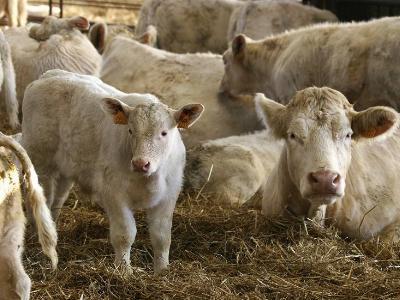Mycotoxins in corn silage threaten ruminant performance

2015 corn harvest found to have moderate to high risk levels of multiple toxins, calves especially susceptible
Corn and corn silage samples from the 2015 harvest revealed moderate to high levels of multiple types of mycotoxins, reported Dr. Max Hawkins during Alltech’s 2015 North American Harvest Analysis webinar, held on November 30. The ruminant-specific report aimed to assess the risks posed by these toxins found in feedstuffs and cattle feed.
This year, the company analyzed 116 samples from 17 states/provinces, submitted between September 1 and the last week of November.
The 2015 analysis revealed an average of 5.62 mycotoxins per sample – slightly less than the 2014 average of 6.13. However, even at lower levels, new combinations of mycotoxins can have serious effects on cattle health and performance.
“It might be a little less, but it’s a different group of toxins this year and that doesn’t necessarily mean it’s a feedstuff with less risk involved with it,” said Hawkins, who is a nutritionist with Alltech’s Mycotoxin Management Team.
He warns that multiple mycotoxins work synergistically, so it’s important to have an understanding of different levels of each toxin within the feed.
Effects of multiple mycotoxins
Produced by various mold species, there are more than 400 known mycotoxins that produce toxic side effects.
The groups of mycotoxins of particular concern to ruminants this year come from the soil-born molds Fusarium, Pencillium and Aspergillus.
In ruminants, these mycotoxins pose a threat to dry matter intake (DMI), milk production, weight gain, rumen function, gut health and immune response.
Hawkins highlighted the mycotoxin groups present in the 2015 harvest samples and their prevalence:
- B Trichothecenes (DONs) = +90 percent
- Fusaric Acid = +90 percent
- A Trichothecenes (T2) = higher levels than 2014, high levels of DOS
- Fumonsins = 60 percent
- Pencillium toxins = more than 40 percent (higher than 2014), may increase while in storage
“The increased levels of T2 family and Pencillium toxins together are increasing the risk over what we saw in 2014 corn silage,” he reported.
REQ distribution among samples
Based on Alltech’s Risk Equivalent Quantity (REQ), an estimate of all mycotoxins and their risk contained within a feed or feedstuff, 85 percent of samples were of moderate to high risk for dairy cattle; 84 percent moderate to high risk for beef cattle; and 95 percent moderate to high risk for calves.
Developing animals are particularly susceptible to the effects of multiple mycotoxins. According to Hawkins, REQ for calves ranked at 87 percent in the high risk category due to the potential long-term effects of mycotoxin exposure.
“Once you begin feeding forages to young calves - particularly on replacement heifers – you run the risk of impacting growth, performance and sexual development; lactation; and subsequent lifetime performance,” he explained. “Many times people think of calves as very young animals, but really on the dairy side, calves can go up until the heifer is bred. In beef cattle, receiving at the feed lot … so really we’re talking about all immature cattle.”
Depending on the inclusion of corn silage in a ration, risk can be reduced, but will likely still walk the line between moderate and high REQ levels.
The 2015 North American Harvest Analysis was conducted at Alltech’s ISO/IEC accredited Analytical Services Laboratory in Winchester, Kentucky.
Jackie Roembke is editor of Feed Management and Feed International.
Có thể bạn quan tâm
 Climate change increasing heat stress in dairy cows
Climate change increasing heat stress in dairy cows Dairy cows in traditionally cooler climates may have to cope with the effects of climate change – leaving producers combating the effects of heat stress.
 Live yeast helps manage heat stress in dairy cows
Live yeast helps manage heat stress in dairy cows Rumen modifiers, such as live yeast, can help alleviate the drawbacks of heat stress on digestive comfort and help preserve dairy performance
 Crude protein levels low in 2016 silage crops
Crude protein levels low in 2016 silage crops Find out how to create the best quality silage. In the first and second cuts, average crude protein levels are 14.1 and 14.2 percent, respectively.